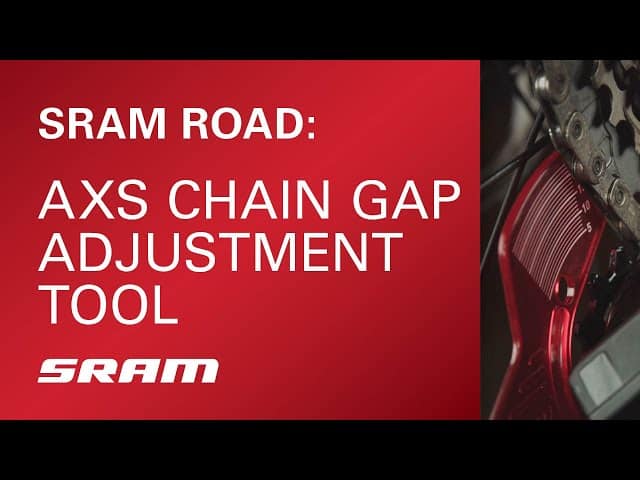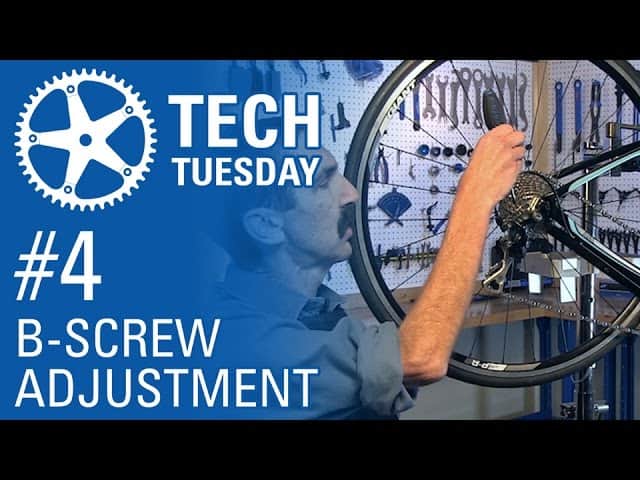This step-by-step guide will help you correctly set your Shimano, SRAM, or Campagnolo B-gap tension screw for smooth and precise shifting performance.
The B-gap, or derailleur pulley gap, is the distance between the center of the upper jockey wheel (guide pulley) and the center of the cassette’s largest sprocket. The B-gap screw is located at the back of the derailleur and allows you to adjust the distance between the top pulley and the cassette.
Based on my experience, setting the correct B-gap is crucial for ensuring efficient and accurate shifting and preventing excessive wear on your bike’s drivetrain components.
Setting B-gap for Shimano derailleurs
Before diving into the B-Gap adjustment process, it’s crucial to identify your Shimano derailleur model, as different models have different B-gap settings.
Shimano B-gap adjustment steps
- Check the B-gap specifications for your rear derailleur model from the table below. The specification varies according to the model and cassette size.
- Shift the chain onto your cassette’s smallest chainring (front) and the largest sprocket (rear).
- Locate the B-tension adjustment screw on the rear derailleur body. This B-screw is typically marked with a B.
- Use a 3mm hex to turn the B-screw. Turn clockwise to increase the gap and counter-clockwise to decrease it. You can use the Shimano GG adjustment gauge if you’re running a Shimano 12-speed rear derailleur.
- Shift the chain across all the cogs to ensure smooth shifting. Make minor adjustments accordingly.
Here’s a video demonstration of adjusting the Shimano B-gap screw.
12-speed Shimano
The table below shows the combination of the B-gap for the Shimano 12-speed Dura-Ace, Ultegra, and 105 rear derailleur and cassette sizes.
| Rear derailleur model | 11-30T | 11-34T | 11-36T |
|---|---|---|---|
| Dura-Ace (RD-R9250) Ultegra (RD-R8150) | 14mm | 6mm | |
| 105 (RD-R7150) | 10mm | 6mm |
10 and 11-speed Shimano
Shimano doesn’t specify the B-gap distance for its 10, 11-speed road groupsets. Instead, according to Shimano, bring the guide pulley as close to the largest sprocket as possible without any turbulence between the pulley and sprocket.
The chain and guide pulley will begin to stutter if they’re too close to each other.
More reading : Shimano Ultegra Di2 (R8100) vs Dura-Ace Di2 (R9200)
Setting B-gap for SRAM derailleurs
Like Shimano, SRAM offers a variety of 11 and 12-speed rear derailleurs. To identify your SRAM derailleur model, check for the model name printed on the derailleur body.
SRAM B-gap adjustment steps
- Check the B-gap specifications for your rear derailleur model from the table below. The specification varies according to the model and cassette size.
- Shift the chain onto the smallest chainring (front) and the largest sprocket (rear) of your cassette.
- Place the SRAM Chain Gap Adjustment Gauge against the upper pulley wheel and the largest cassette sprocket, aligning the tool’s markings with the derailleur cage.
- Adjust the B-tension screw until the appropriate gap is achieved. Turn clockwise to increase the gap and counter-clockwise to decrease it.
- Remove the B-gap tool.
- Test your shifting performance. If necessary, make small adjustments to fine-tune the B-gap.
Here’s a video demonstration of adjusting the SRAM B-gap screw.

12-speed SRAM
The table below shows the B-gap for SRAM AXS Road (12-speed) rear derailleur and cassette sizes combination. There are two variants of the rear derailleur,
- Short cage, supports maximum 33T cassette
- Medium cage, supports a maximum 36T cassette
| Rear derailleur model | 10-26T | 10-28T | 10-30T | 10-33T | 10-36T |
|---|---|---|---|---|---|
| Short cage (33T max) | 14mm | 10mm | 10mm | 5mm | |
| Medium cage (36T max) | 12mm | 10mm | 5mm | 5mm |
11-speed SRAM
| Rear derailleur model | B-gap |
|---|---|
| Red 22 eTap | 6 to 8mm |
| Red22, Force22, and Rival22 | 6mm |
More reading : SRAM Rival eTap AXS vs Shimano 105 Di2 (R7100)
Importance of correct B-gap adjustment
When the B-gap is correctly adjusted, the derailleur can move freely and quickly between gears.
An incorrectly adjusted B-gap can cause the derailleur to shift slowly or sluggishly or even cause the chain to jump between gears or drop off the chainring.
- B-gap is too big. The rear derailleur will be positioned too far away from the cassette, causing slow shifting. Although the derailleur will still shift gears, the shifting will not be as precise and crisp as it should be.
- B-gap is too small. The rear derailleur will be positioned too close to the cassette. This can cause the derailleur to jam against the cassette when shifting to larger cogs, preventing it from shifting correctly or even causing damage to the components.
While B-gap adjustment is typically a set-and-forget process, it may need to be readjusted over time due to wear or changes to the drivetrain components. You can also have a professional bike mechanic check and adjust the B-gap during regular bike maintenance to ensure it functions properly.
FAQ
How often should I check and adjust the B-gap on my derailleur?
You should check and adjust the B-gap when replacing or installing a new chain, cassette, or derailleur. Additionally, inspecting the B-gap as part of your regular bike maintenance routine is good, especially if you notice any shifting issues or increased chain noise.
Can an incorrect B-gap cause problems with my drivetrain components?
An incorrect B-gap can lead to poor shifting performance, such as slow or imprecise gear changes, dropped chains, and noise. Moreover, a poorly adjusted B-gap can cause increased wear on your chain, cassette, and jockey wheels, ultimately reducing the lifespan of your drivetrain components.
Can I use the same B-gap adjustment for different cassette sizes?
It’s always best to fine-tune the B-gap according to the specific cassette you are using. Different cassette sizes can affect the required gap between the jockey wheel and the sprockets, impacting shifting performance and drivetrain wear.
What should I do if I cannot achieve the proper B-gap adjustment on my derailleur?
If you cannot achieve the proper B-gap adjustment, ensure your derailleur hanger is straight and in good condition, as a bent or damaged hanger can affect the B-gap.
If the hanger is not the issue, consult your local bike shop. They can help diagnose and resolve potential compatibility issues, such as using the wrong derailleur cage length for your specific cassette or an incorrect derailleur model for your bike.

Bernard Lu has 7+ years of experience working in a bicycle shop, overseeing the retail and workshop operations. He’s a qualified bicycle mechanic who understands a cyclist’s needs and speaks the same cycling lingo.
If you meet him at the cafe, he will happily talk to you for hours about all the intricacies of bikes and cycling tech. Just buy him a coffee next time you see him.
